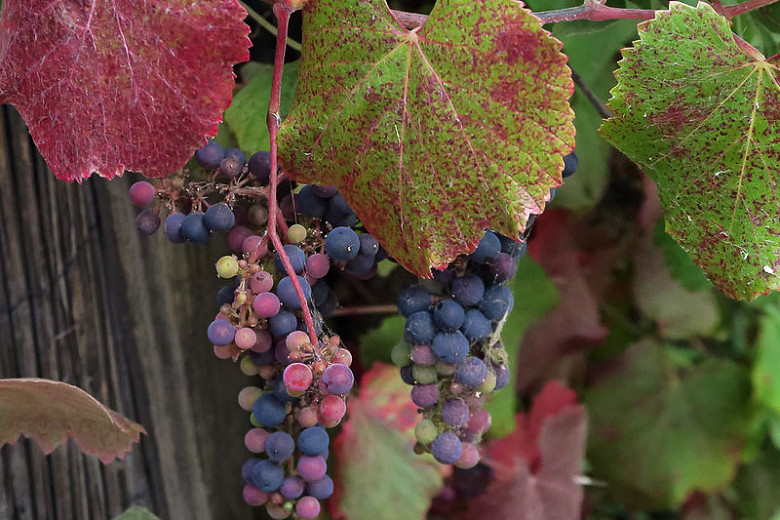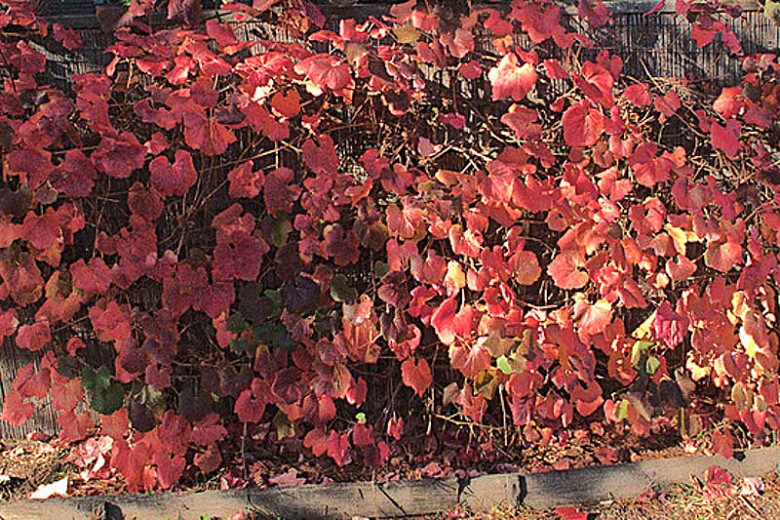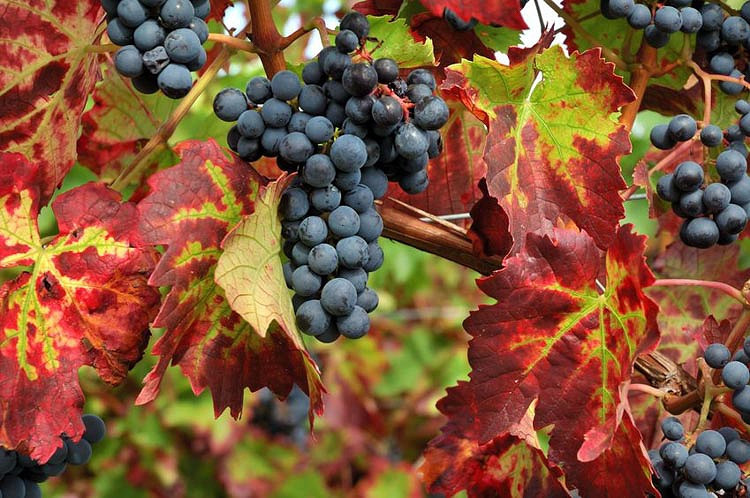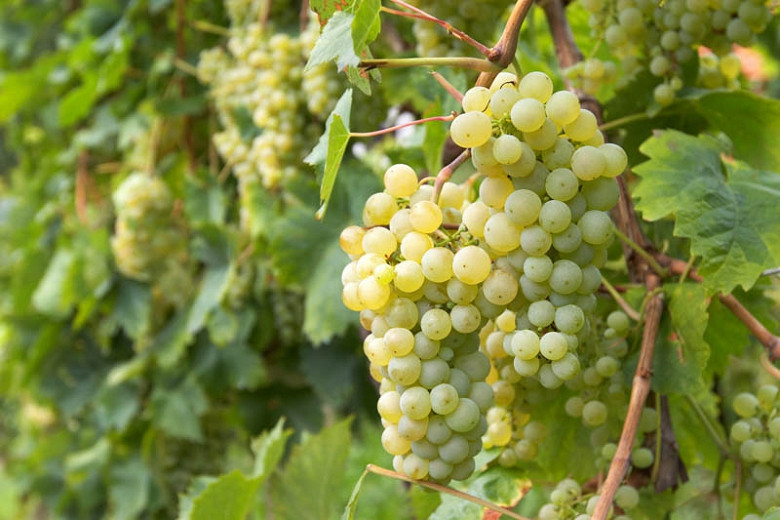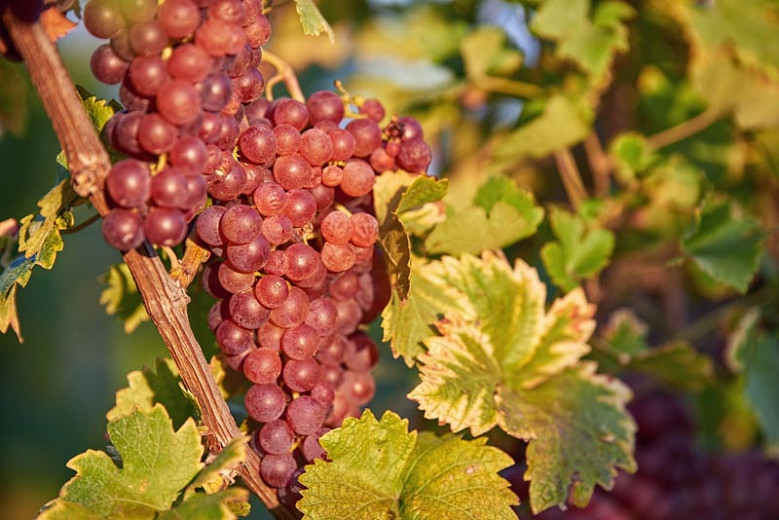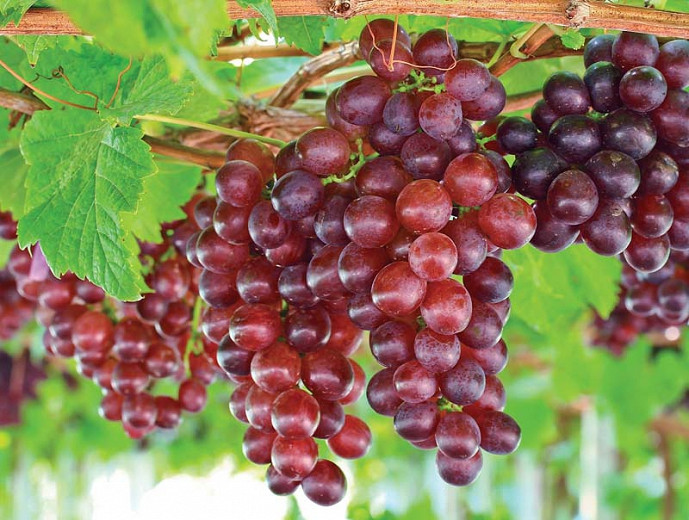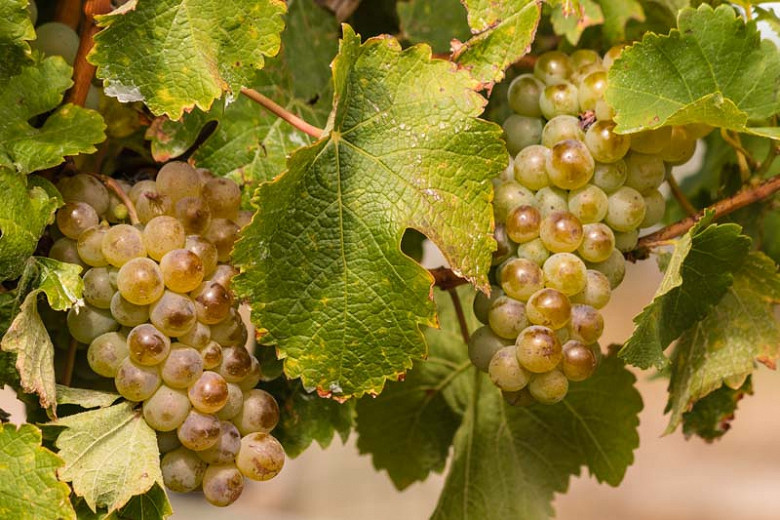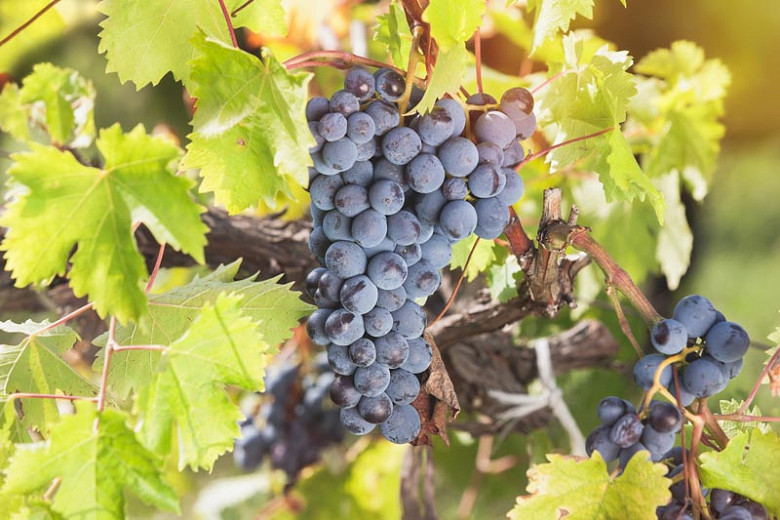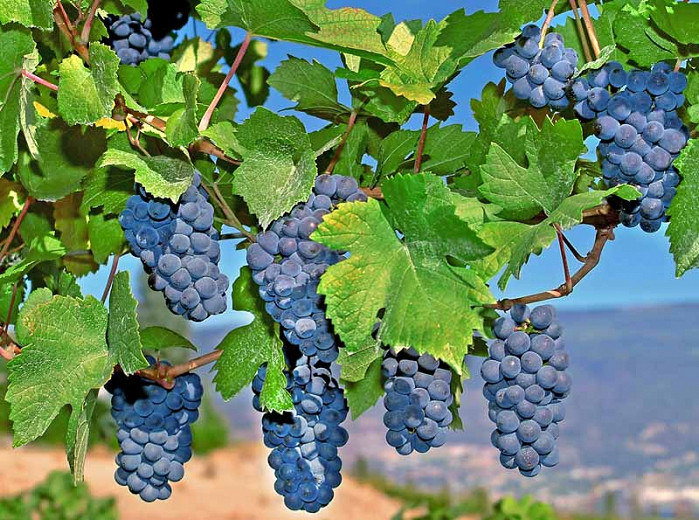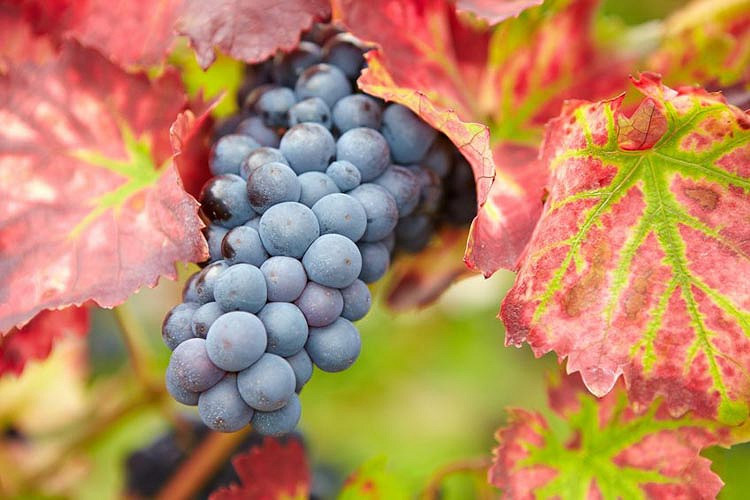Vitis californica (California Grape)
Vigorous and strong-growing, Vitis californica (California Grape) is a large, deciduous, conspicuous vine valued for its bright fall colors and edible, purple grapes. Its long-reaching woody stems are covered with broad, fan-shaped leaves, 6 in. wide (15cm) and 4 in. long (10 cm). Adorned with coarsely cut lobes and margins, they emerge silver green in spring, mature to apple green as the season progresses, before turning shades of orange and yellow in the fall. California Grape is dioecious, with separate male plants and female plants. Pleasantly fragrant, greenish-white flowers appear in late spring to early summer, although they are often hidden in the foliage. They are followed by small, edible grapes that ripen in summer. The fruits, often sour, can be eaten fresh and can be used to make jellies and juices. They are a favorite food source for birds and wildlife. Native to foothill and valley habitats below 3,000 ft. in elevation from Oregon through northern and central California, California Grape occurs naturally along streams and rivers and thrives in damp areas. Extremely fast-growing and easy to grow, California Grape is adapted to cold winters, and warm summers, and is drought tolerant once established. It spreads over the ground and easily climbs over shrubs and into trees. It can be trained into an arbor, or windbreak along a fence. Without support, it makes a nice ground cover. California Grape is of great importance to the wine industry. This species was used to save the European wine industry between 1870 and 1900 when most wine grapes (Vitis vinifera) were killed by phylloxera aphids. Since that time, nearly all commercial wine grapes grown anywhere in the world have been grafted onto rootstocks of resistant California Grape cultivars.
- Can grow up to 10-40 ft. tall and wide (3-12 m). This can be an aggressively rampant vine, so site carefully.
- Thrives in full sun to part shade in moist, loam, or clay, well-drained soils. Well adapted to periods of drought.
- No serious pest or disease issues. Keep an eye out for sharp-shooters that are vectors for Pierce's disease, which is fatal to grapes.
- Propagate by seed or cuttings
- Prune in winter when dormant. Established plants should be pruned back significantly every year.
- Native to California, Oregon.
Requirements
| Hardiness | 7 – 10 |
|---|---|
| Climate Zones | 4, 5, 6, 7, 8, 9, 10, 11, 12, 13, 14, 15, 16, 17, 18, 19, 20, 21, 22, 23, 24 |
| Plant Type | Climbers, Fruit, Shrubs |
| Plant Family | Vitis – Grape Vines |
| Exposure | Full Sun, Partial Sun |
| Season of Interest | Spring (Mid,Late)Summer (Early,Mid,Late)Fall |
| Height | 10' – 40' (3m – 12m) |
| Spread | 10' – 40' (3m – 12m) |
| Water Needs | Average |
| Maintenance | Average |
| Soil Type | Clay, Loam |
| Soil pH | Acid, Alkaline, Neutral |
| Soil Drainage | Moist but Well-Drained |
| Characteristics | Fragrant, Showy |
| Native Plants | United States, California, Pacific Northwest, Oregon |
| Tolerance | Drought |
| Attracts | Birds, Butterflies |
| Garden Uses | Arbors, Pergolas, Trellises, Ground Covers, Wall-Side Borders, Walls and Fences |
| Garden Styles | Informal and Cottage |

